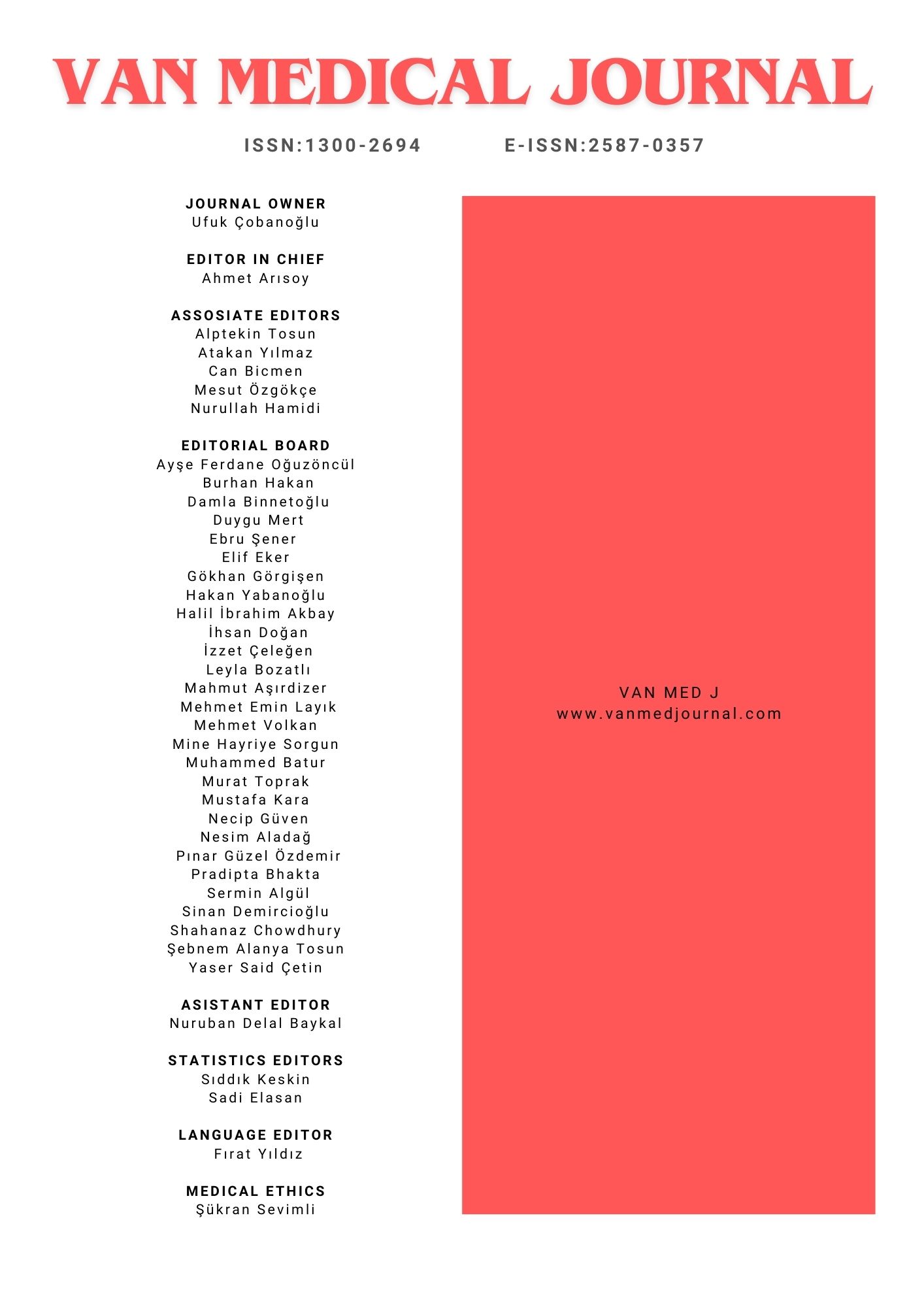The Genotype of Hepatitis C Distribution in Van and Evaluation of the predicted Risks For Transmission
Dilek Bulut1, Merve Sefa Sayar21Ankara Etlik City Hospital, Infectious Diseases And Clinical Microbiology Clinic, Ankara2Bursa Yüksek İhtisas Training And Research Hospital, Infectious Diseases And Clinical Microbiology Clinic, Bursa
INTRODUCTION: With 7 primary genotypes and more than 100 subgroups, the hepatitis C virus (HCV) exhibits considerable genetic variability. Due to changes in genotype rates brought on by population migrations, epidemiology data must be updated regularly. This article's aims are to present HCV genotype data, investigate the link between age and gender, and establish the genotype distribution in relation to risk variables.
METHODS: Between 2017 and 2021, 95 HCV patients were included in this retrospective, single-center investigation. Anti HCV, HCV RNA polymerase chain reaction results (PCR) and HCV genotype status of the patients were recorded. Abbott Real Time HCV Genotype II genotyping kit was used for HCV genotyping of patients with positive HCV RNA PCR test.
RESULTS: 56 (59%) male and 39 (41%) female patients were included in the study. When both genders were examined, it was discovered that genotype 1b (65.3%) was the most common genotype. The least frequent genotypes among the patients were genotype 2 (2.1%) and genotype 4 (2.1%). Regarding HCV genotype type and gender, no statistically meaningful variation was found. However, the evaluation made in terms of genotype type and age showed a statistically significant difference (p 0.001). The most common possible transmission route of the patients was the presence of surgical operation (45.3%), and genotype 1b was the most common in this group.
DISCUSSION AND CONCLUSION: Determination of HCV genotypes and transmission routes and regular reporting of regional data will contribute to epidemiological data. This will guide the development of health policies for HCV and the elimination of HCV.
Van İlindeki Hepatit C Genotip Dağılımı ve Bulaş için Öngörülen Risklerin Değerlendirilmesi
Dilek Bulut1, Merve Sefa Sayar21Ankara Etlik Şehir Hastanesi, Enfeksiyon Hastalıkları Ve Klinik Mikrobiyoloji Kliniği, Ankara2Bursa Yüksek İhtisas Eğitim Ve Araştırma Hastanesi, Enfeksiyon Hastalıkları Ve Klinik Mikrobiyoloji Kliniği, Bursa
GİRİŞ ve AMAÇ: Hepatit C virüsü (HCV) 7 ana genotip ve 100’den fazla alt tiple yüksek genetik heterojeniteye sahiptir. Nüfus hareketlilikleri genotip oranlarında oynamalara neden olduğu için epidemiyolojik verilerin düzenli güncellenmesi ihtiyacı doğmaktadır. Bu yazının amacı HCV genotip verilerini ortaya koymak, yaş ve cinsiyet ile ilişkisini irdelemek, risk faktörlerine göre genotip dağılımını belirlemektir
YÖNTEM ve GEREÇLER: Retrospektif/tek merkezli olan çalışmamızda 2017-2021 tarihleri arasında, 95 HCV hastası çalışmaya dahil edildi. Hastaların Anti HCV, HCV RNA polimeraz zincir reaksiyonu (PCR) ve HCV genotip durumu kaydedildi. HCV RNA PCR testi pozitif saptanan hastaların HCV genotiplendirmesinde Abbott Real Time HCV Genotype II genotipleme kiti kullanıldı.
BULGULAR: Çalışmaya 56 (59%) erkek ve 39 (41%) kadın hasta dahil edildi. Her iki cinsiyet incelendiğinde en yaygın genotip 1b (%65,3), ikinci sıklıkta genotip 3 (%16,8) ve genotip 1a (%13,7) olduğu görüldü. Hastalar arasında genotip 2 (%2,1) ve genotip 4 (%2,1) en az görülen genotiplerdi. HCV genotip türü ve cinsiyet açısından istatiksel olarak anlamlı bir fark izlenmedi. Ancak genotip türü ve yaş açısından değerlendirildiğinde istatiksel olarak anlamlı fark bulunmaktaydı (p< 0,001). Hastaların en sık görülen olası bulaş yolu cerrahi operasyon varlığı olup (%45,3), bu grupta en çok genotip 1b olduğu görüldü. Diyaliz 19 (%20) ve İntravenöz (IV) uyuşturucu kullanımı 16 (16.8%) sık görülen bulaş yolları arasında yer alırken; dental girişim, kan transfüzyonu, aile içi bulaş ve cinsel ilişki ile bulaşın daha az sıklıkta görüldüğü saptandı.
TARTIŞMA ve SONUÇ: HCV genotiplerinin ve bulaş yollarının belirlenerek bölgesel verilerin düzenli bildirilmesi epidemiyolojik verilere katkı sağlayacaktır. Bu durum HCV’ ye yönelik sağlık politikalarının geliştirilmesi ve HCV’nin ortadan kaldırılması adına yol gösterici olacaktır.
Corresponding Author: Dilek Bulut, Türkiye
Manuscript Language: Turkish

